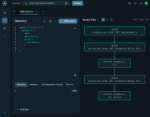
The supergraph company Apollo GraphQL today introduced Apollo GraphOS, the end-to-end platform to build, connect, and scale any supergraph. GraphOS works as the execution fabric for the supergraph, a runtime that connects backend and frontend systems in a modular way.
It offers self-hosted or cloud hosted routing, allowing users to choose to operate the supergraph in the cloud and build without complicated infrastructure setup or configuration.
“The supergraph is built to solve the needs of application developers – to give them the flexibility and resources they need to build amazing experiences without the complexity and friction that constantly gets in the way,” said Matt DeBergalis, CTO and co-founder of Apollo. “We’ve seen industry consensus that the supergraph meets those needs – some of the world’s biggest and most forward-thinking companies are using it. With GraphOS, we’re removing the complexity involved with operating a supergraph, while giving everyone an easy onramp to experience the benefits of having one.”
With GraphOS, users gain access to advanced GraphQL capabilities and new and upcoming features such as @defer, live queries, and edge caching, offering developers the flexibility to build a new generation of apps.
Additionally, GraphOS provides a central source of truth for schemas and delivery pipelines for changes as well as security and governance best practices.
According to the company, it will also soon offer the ability to link supergraphs beyond organizational firewalls.
“If supergraphs are about connecting everything together, and if organizations around the world are building supergraphs, developers should be able to connect data and services beyond what’s available to them inside their company,” said Geoff Schmidt, CEO and co-founder of Apollo. “When those global connections are made, the supergraph becomes a window into the world’s data – a new fabric for the internet that everyone can access and use to build and create whatever they want. It becomes a global, decentralized, collective resource like the World Wide Web.
To learn more, visit the website.




